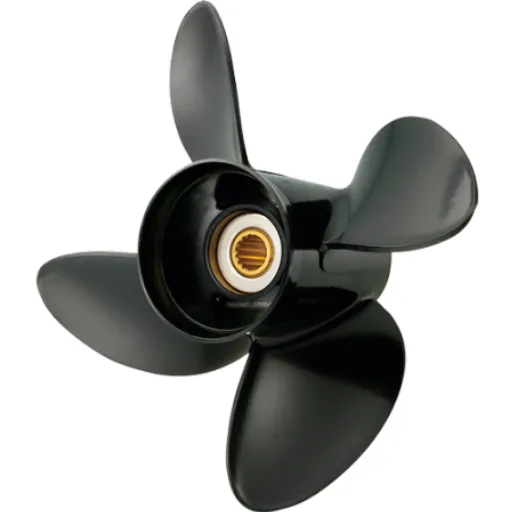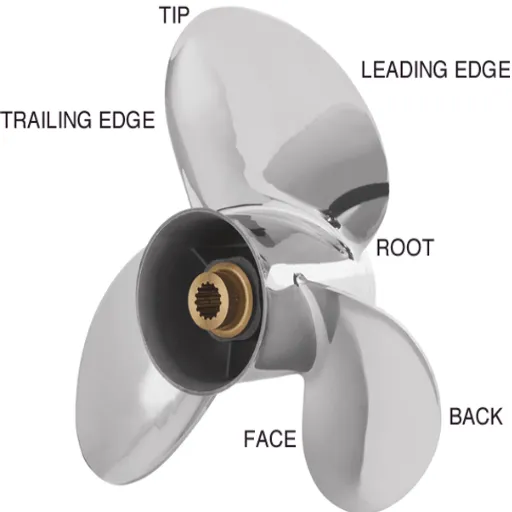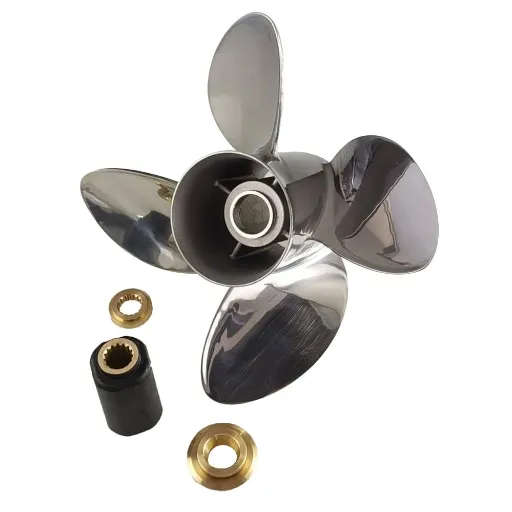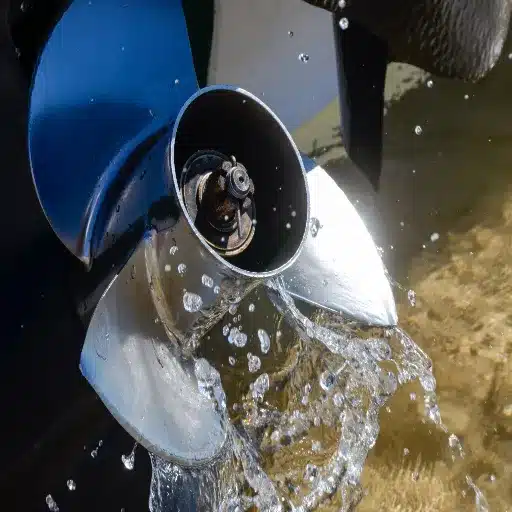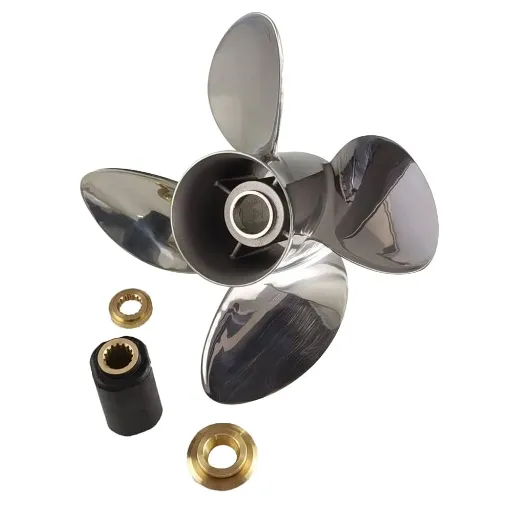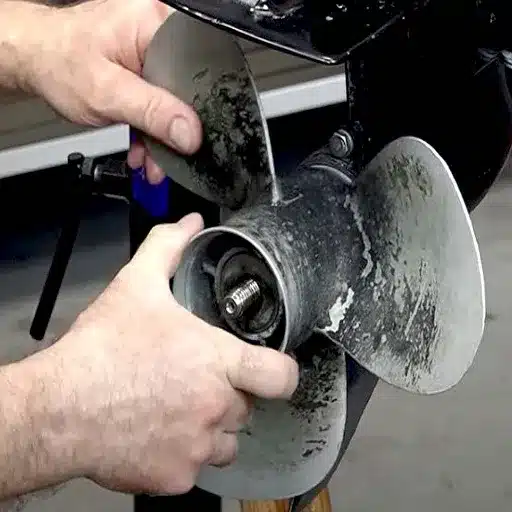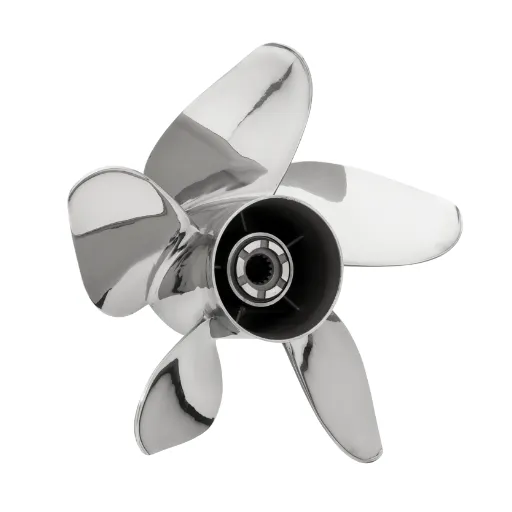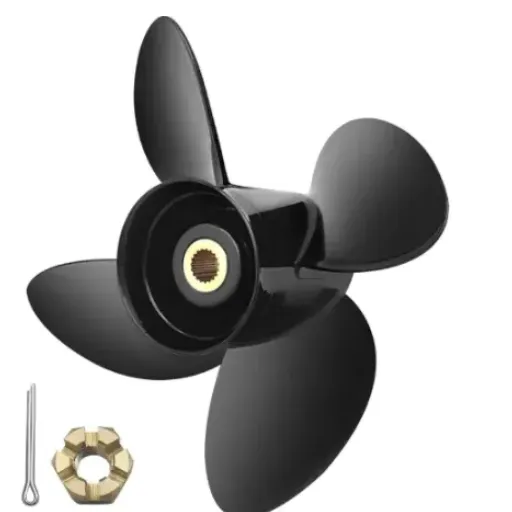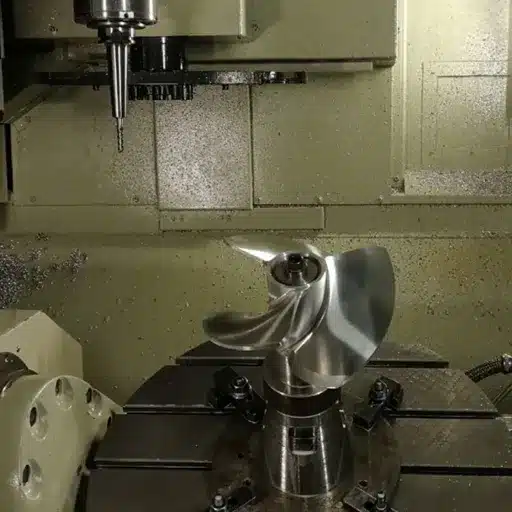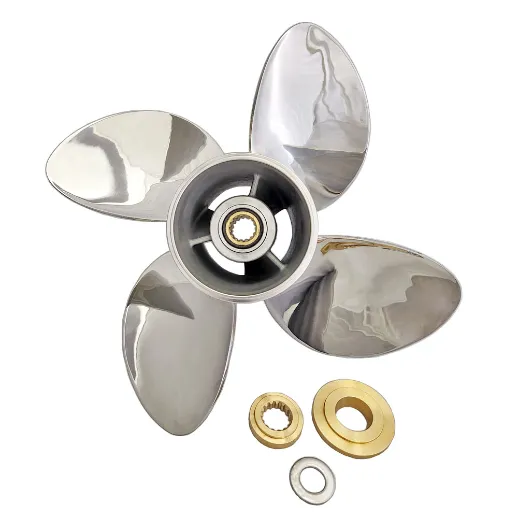When seeking exceptional performance and fuel economy from your Suzuki outboard motor, the choice of propeller is a crucial consideration. With seemingly innumerable options in 2025, one could easily become overwhelmed by the choice. It shouldn’t be so. This guide aims to bring clarity to the subject by explaining the impact of propeller type, material, and specification on boat speed, handling, and fuel economy. If you are a passionate boater or just out buying for the first time, this article will provide you with all the insights for a wise choice. Read ahead to find out the essential things you need to consider when choosing a Suzuki propeller and how to harness ultimate performance from your outboard.
Understanding the Importance of the Right Propeller
A Propeller Selection and Performance
Choosing the correct propeller is the first step to ensuring proper performance of your boat. The propeller affects aspects such as acceleration, top speed, fuel economy, and overall handling. For example, suppose you have selected a propeller with a specific pitch, which refers to the distance the propeller moves in one revolution. In that case, it will directly affect your engine’s RPM, ensuring it falls within the recommended RPM range for maximum efficiency. Less pitch gives better acceleration; more pitch helps obtain higher speed.
Material Choices
Aluminum propellers weigh less and are low-cost options suitable for fair-weather boating. In contrast, stainless steel propellers, with their thin blades, offer more durability and higher performance, ensuring precise operation.
Blade Configuration
More blades generally mean increased handling qualities. The faster three-blade propellers are synonymous with speed and efficiency, while four-blade propellers promote stability and comfort.
Diameter Impact
The diameters affect thrust and how an engine delivers power. Large-diameter propellers provide greater thrust for heavy boats moving at slow speeds, while small-diameter propellers favor lightweight crafts that need high speeds.
Knowing all these intricacies and matching the propeller to your specific requirements will go a long way in boosting the overall performance of your boat and ensuring maximum enjoyment while on the water.
Create Impact on Fuel Efficiency
Fuel Optimization Savings
Up to 20%
Cost savings for long-distance operations
The fuel efficiency of the boat is highly influenced by the design and selection of its propeller; therefore, it is a crucial factor in operational costs and environmental impact. An appropriate propeller enables the engine to operate at its best within the performance range or recommended RPM (revolutions per minute). For instance, an oversized propeller or one with inappropriate pitch will force the engine to exert more power, thereby consuming more fuel and lessening efficiency. On the other hand, a small-diameter propeller or incorrect pitch would cause the engine to underperform, resulting in unnecessary energy expenditure. Industry data reveal that cost savings of up to 20% can be realized for vessels operating on long distances and in commercial operations through fuel optimization. Taking that extra step to fine-tune all items and regularly keeping the propellers clean and free of damage will certainly enhance fuel economy. Thus, an efficacious design of the propeller reduces operational costs and promotes sustainable boating by minimizing carbon emissions.
Common Errors in Selecting Propellers
❌ Mismatched Specifications
One of the most frequent mistakes in propeller selection is mismatching the propeller specifications with the engine power of the vessel and its intended purpose. An incorrectly sized propeller will definitely result in underperformance, fuel wastage, and engine damage. For example, an incorrectly tall pitch might cause the engine to press down into lower RPMs, while a pitch that is too low might send the engine to the upper RPMs, limiting its efficiency.
❌ Ignoring Load Conditions
Another common mistake is forgetting how much weight the boat carries and what operating conditions it is subjected to. A heavily loaded vessel or one subjected to harsh conditions may require a somewhat different propeller dynamic to maintain good performance. Neglecting to account for these factors would, in most situations, result in unsatisfactory thrust and poor overall performance.
❌ Material Selection Oversight
Another aspect that is often neglected in propeller procurement is material selection. Although stainless steel propellers represent the best in durability and efficiency, choosing aluminum propellers solely to save money may result in repeated propeller replacements over the vessel’s service life, leading to higher costs.
❌ Neglecting Maintenance
Then, disregarding maintenance and regular inspection for the propeller worsens any existing problem. Performance irregularities introduced by damage, such as dents or surface wear, significantly reduce propulsion efficiency and increase fuel consumption. Proper maintenance and regular consultation with specialists during the selection and maintenance of a propeller are essential steps to avoid these pitfalls.
Types of Suzuki Outboard Propellers
Aluminum Vs. Stainless Steel Propellers
When selecting a Suzuki outboard propeller, the deciding factor usually comes down to two materials: aluminum or stainless steel. Each trade-off involves the usual considerations of performance, durability, and cost.
| Material | Advantages | Best For | Considerations |
|---|---|---|---|
| Aluminum | • Lightweight • Affordable • Forgiving to minor impacts |
Recreational boating, beginners, small boats | Flexes under heavy loads, not ideal for high speeds |
| Stainless Steel | • Superior strength • Higher speed capability • Maintains blade shape • Wear resistant |
Performance boats, rough conditions, commercial use | Higher cost, impacts can damage drivetrain |
Being lightweight and affordable, aluminum propellers are great for recreational boaters. Being more affordable, they are ideal for individuals starting out or needing an inexpensive replacement. Aluminum propellers are relatively forgiving; minor impacts might not lead to catastrophic damage. However, they are not well-suited for high speeds or rough environments, and they do flex under heavy loads, which results in inefficiency for larger vessels or in more demanding situations.
Superior steel propellers ensure strength and durability, and feature a fine finish that allows them to operate at higher speeds. Strength under pressure will maintain the blade shape, providing optimal gearing efficiency and propulsion. Since steel propellers are much resistant to wear and tear, they are always preferred by boat operators who indulge in deep or rough weather. Nonetheless, durability puts the stainless steel propellers in the higher price category compared to the aluminum ones. Additionally, with such rigid material, impacts with driftwood or similar objects can cause further damage to the drivetrain.
When deciding, one must consider all factors, such as actual boating habits (in other words, recreational versus performance), operating environment (a calm lake versus rough seas), and budget. For small boats or casual use, aluminum props offer a practical and cost-effective solution. For better performance, durability, and optimal efficiency, stainless steel is considered the superior yet more expensive option.
Advantages of Watergrip Propeller
🌊 WaterGrip Technology Benefits
Enhanced Grip
Virtually eliminates blade ventilation and slippage, providing smoother and highly responsive handling, even in adverse situations.
Optimized Performance
Optimized blade geometry further compensates for increased acceleration and top-end speeds, making it well-suited for use in both recreational and high-performance boating.
Energy Efficiency
Designed to minimize energy loss, ensuring maximum thrust and fuel efficiency—a must-have for long-distance travel and environmentally aware users.
Durable Construction
Their build materials, typically stainless steel or high-grade aluminum alloys, provide resistance to corrosion and abrasion, significantly extending the lifetime while maintaining efficient performance.
WaterGrip propellers feature a unique combination of performance, efficiency, and durability to suit a diverse range of boating needs. Designed to enhance grip and maneuverability, these propellers virtually eliminate blade ventilation and slippage, providing smoother and highly responsive handling, even in adverse situations. Optimized blade geometry further compensates for increased acceleration and top-end speeds, making it well-suited for use in both recreational and high-performance boating.
Furthermore, Watergrip propellers are designed to minimize energy loss, ensuring maximum thrust and fuel efficiency—a must-have for long-distance travel and environmentally aware users. Their build materials, typically stainless steel or high-grade aluminum alloys, provide resistance to corrosion and abrasion, significantly extending the lifetime while maintaining efficient performance. This versatility in engine model and water type makes the Watergrip propellers a prime choice for maximum value and performance, precisely catering to the current needs of boating.
Choice of Fixed or Adjustable Propulsion System
Fixed-Pitch Propellers
- Single pitch in fixed position
- Strong performance and reliability
- Better wear resistance
- Lower cost and fewer repairs
- Ideal for predictable conditions
Best for: Leisure cruising, cargo transport
Adjustable Propellers
- Variable pitch blades
- Accommodate changing requirements
- Optimize fuel consumption or speed
- Improve maneuvering flexibility
- Adapt to different conditions
Best for: Fishing, towing, multi-purpose boats
Each propeller type has its unique character, operational environment, and effects on the outcome. Fixed-pitch propellers are constructed with a single pitch in a fixed position, thereby ensuring strong performance and reliability. Fixed-pitch propellers will withstand wear and tear better, cost less to purchase, and require fewer repairs than variable-pitch types. They are mainly used on boats with predictable operating conditions or those intended for one primary use, such as vessels designed for leisure cruising or cargo transport.
On the other hand, adjustable propellers are those that have blades with variable pitch, allowing them to accommodate changing operational requirements. This variable nature enables boat operators to either maximize fuel consumption, maximize speed, or improve maneuvering as the situation dictates, depending on the task at hand or shifting water conditions. Where adjustable propulsion instruments stand more in favor of a boat doing several different things, such as fishing, towing, or fast travel. The increased flexibility these propellers afford comes with a higher upfront price and the added demand for conscientious maintenance.
Ultimately, the choice between fixed and adjustable propellers would depend on your application, the desired performance outcome, and, if you may ask, the available budget. Their choice may inflate efficiency and costs, and hence remain an essential comparison for other aspects of the boating experience.
Factors to Consider When Choosing a Suzuki Propeller
Matching the Propeller with the Horsepower of the Outboard Motor
⚠️ Critical Matching Requirements
Mismatched propellers can cause performance loss and significant engine strain
It is crucial to ensure that a propeller is matched to the horsepower rating of the outboard motor for optimal performance and fuel economy. Other performances, such as abrupt acceleration in speed, may be lost along with significant strain on the engine. Propellers, generally speaking, are manufactured with pitch and diameter combinations suitable for specific horsepower ranges of engines; for example, lower horsepower outboards will need props with lower pitch so that the engine can produce thrust without being overloaded, while higher horsepower outboards can accommodate higher pitch props, capable of higher speeds and efficiency over long distances.
Lower HP Outboards
Need props with lower pitch to produce thrust without engine overload
Higher HP Outboards
Can accommodate higher pitch props for increased speeds and long-distance efficiency
The right propeller does not just aid navigation. It also keeps the engine within speed ranges as recommended in the motor manuals. Speed within this recommended range ensures the motor operates in good working condition, as anything beyond it will cause undue wear and tear. Keeping within the range assures the smooth running of the motor. Make an informed decision by consulting the performance manual of your motor or your authorized dealer.
Pitching and Diameter
Pitch and diameter are essential for the efficiency and performance of the propeller. Diameter is the measured distance across the circle created by the rotation of the propeller; pitch is the theoretical distance a propeller would advance in one complete revolution, assuming no slippage. They are interrelated in directing speed, thrust, and engine performance for a boat.
| Specification | Higher Values | Lower Values | Best Application |
|---|---|---|---|
| Pitch | • Greater forward speed • Lower acceleration • Reduced load handling |
• Better acceleration • Improved load handling • Lower top speed |
High: Speed boats Low: Towing, heavy loads |
| Diameter | • Increased water resistance • Better load balance • More thrust at low speed |
• Reduced resistance • Higher RPM capability • Better top speed |
Large: Heavy boats Small: Lightweight, speed |
For instance, a propeller with a higher pitch transfers the kinetic energy to the water at a faster rate, thus generating a greater forward speed, but has lower acceleration and load-handling ability. Meanwhile, lower-pitch propellers can accelerate more effectively and are better suited to handling, making them suitable for towing or carrying heavier loads; however, they can compromise efficiency when it comes to outright top speed. The last modification to improve a propeller’s performance, and generally if at all possible in favor of pitch, is to the diameter, which acts against water resistance and load balance entrance for this or that engine.
An ideal pitch-diameter duo is chosen according to the vessel’s specific needs, i.e., the speed versus power balance, the boat’s size, and engine specifications. By relying on optimally maintained data, such as the engine’s optimal RPM range, and practically recommended manuals on engine performance, the selected propeller would contribute to better handling and efficiency, while putting less stress on the motor to its maximum.
Weight and Size of the Boat to Consider
Bigger/Heavier Boats
- Need lower pitch propellers
- Require more thrust and torque
- Better at lower speed ranges
- Handle heavy loads effectively
Smaller/Lighter Boats
- Opt for high-pitch propellers
- Achieve increased speed
- Efficient at high RPMs
- Better acceleration characteristics
The weight and size of your boat matter a great deal in determining the appropriate propeller choice. Bigger boats, or heavier ones, tend to need propellers of lower pitch to provide enough thrust and torque, especially at lower speed ranges or when heavy weights are being carried. Smaller and lighter boats typically opt for a high-pitch propeller for increased speed and efficiency at high RPMs. Taking into account the entire displacement of the ship and the variable load condition (which may include carrying equipment, passengers, or supplies) helps optimize performance. Most manufacturers provide their performance charts and specifications to help assign propeller characteristics to vessel dimensions and weight, thereby improving handling and fuel efficiency.
Top Suzuki Propellers for 2025
Recommended Models for 8-20 HP Suzuki Outboards
When selecting a propeller for 8-20 HP Suzuki outboards, it is essential to match the model with the type of boating you intend to do, so that you can achieve maximum performance and efficiency. Listed below are some of the highly recommended options for 2025, designed to enhance acceleration, speed, and fuel economy without compromising durability:
Suzuki Aluminum 3-Blade Propeller
Performance Benefits: Best for lightweight boats or utility use, offering smooth handling and stable performance for small to mid-sized vessels. Its lightweight design reduces resistance, ensuring efficient fuel utilization.
Suzuki Stainless Steel 3-Blade Propeller
Performance Benefits: Designed for higher durability and superior speed performance, this propeller is suited for heavier loads or more demanding uses. The rigidity offered greatly diminishes the flex that could lead to long-run reliability.
The Taiko Hydro-Performance Series
Performance Benefits: Offers an advanced hydrodynamic design to enhance top-end speed and thrust. The novel blade configuration reduces drag while maintaining horsepower conversion efficiency.
Solas Amita 4-Blade Propeller
Performance Benefits: This four-blade construction offers better handling during low speeds and steady cruising, making it a great choice for fishing boats and pontoons that have a need for better control in tighter spots.
Suzuki High-Thrust Series
Performance Benefits: Higher thrust for heavier boats or in towing situations. Great series to work in challenging environments, such as those with strong currents or heavy onboard weight.
The choice of a propeller can significantly influence the acceleration, top speed, and fuel economy of a boat. Therefore, it is essential to consult the engine’s user manual to verify specific propeller compatibility under load conditions for optimal results. In line with Suzuki’s tradition of reliability and innovation, all of these models constitute sound choices for marine performance in 2025.
Top Picks for Performance and Fuel Economy
Suzuki DF140BG – Mid-Sized Vessel Champion
The Suzuki DF140BG was considered a leading performer designed for mid-sized vessels. Featuring a digital throttle and shift system, smooth operation and precise control are guaranteed with the highest quality among the best. Lean Burn technology adjusts the mix of fuel and air according to the conditions of use, delivering incredible fuel efficiency without compromising power. Being light in weight but producing 140 hp, the onerous task of accelerating and reaching top speed suits this engine well, and consequently, it earns a reputation among both pleasure and commercial users.
Suzuki DF300B – High-Power Performance
Suzuki DF300B: For bigger vessels, the Suzuki DF300B is an excellent choice. Featuring a unique dual propeller design that enhances water grip, this engine improves both thrust and fuel economy. The 300-hp brute of an engine keeps its options open with Suzuki’s Selective Rotation for either port or starboard. This means that the outboard can be used in a broader range of boat configurations, allowing for greater versatility in performance. Oxygen sensors monitor combustion in real-time for maximum efficiency with the DF300B; thus, it is more suited for long-distance cruising with lower operating cost.
Suzuki DF115BG – Balanced Efficiency
Suzuki DF115BG: The Suzuki DF115BG strikes an impressive balance between performance and efficiency, making it ideal for smaller boats. Utilizing the same Lean Burn fuel management system as other Suzuki models, it adjusts fuel delivery according to operating conditions to maximize range. Being lightweight and boasting a power rating of 115 hp, this vehicle offers impressive speed and handling. Other features include an electronic fuel injection system, ensuring performance reliability and fuel savings.
Suzuki DF200APL – Versatile Power
Suzuki DF200APL: The DF200APL is a handy and versatile outboard, known for prioritizing power over fuel efficiency. It produces 200 horsepower from its sleek design, superlative performance, and offers high fuel efficiency, whether moving west or east. With Quiet Operation technology in place, engine sounds have been dulled into oblivion, much to the delight of anglers and recreationalists alike. The adaptive systems and thoughtfully designed controls must be engendering better power delivery and ease of use.
Each of these Suzuki outboards stands as a paradigmatic example of excellent engineering, designed for optimal performance and fuel economy while catering to various boating needs. Their innovative technology serves as a dependable solution for 2025 marine enthusiasts wishing to maximize their waterfront experience. Be sure to consider your boat size, regular load, and desired application when choosing a model that best suits your requirements.
Successful Propeller Selection Case Studies
1. Performance Enhancement for a Fishing Vessel
A commercial fishing operator wished to improve fuel efficiency and speed while covering distances on the open ocean. Having experimented with various types of propellers, he selected this stainless steel 4-blade design with a slightly reduced pitch over the aluminium 3-blade design originally in use. This resulted in a marked improvement in fuel consumption, medium-speed performance, and handling in rough waters. It allowed the vessel to remain stable and efficient while carrying heavy equipment and frequently being subjected to rough sea conditions.
2. Optimizing Speed and Agility for Recreational Boats
The owner of a speedboat selected a very high-performance 3-blade stainless steel propeller in an attempt to increase acceleration and maximum top speed. The propeller was chosen for recreational water sports, such as tubing and wakeboarding, due to its lightweight materials and refined blade cup design. This contributed greatly to hole-shot acceleration, limited cavitation, and allowed for extremely smooth handling on tight turns, thereby ensuring passenger enjoyment and safety. This modification resulted in a speedboat ideally suited for high-speed recreational use while maintaining durability.
3. Balancing Efficiency and Load Capacity for Pontoon Boats
With their regular outings geared toward leisure and bigger group activities, the family needed an exceptionally heavy-duty propeller that would smoothly rotate under loads. They selected an aluminum 4-blade propeller with larger diameters, placing greater emphasis on enhancing low-speed control and efficiency, particularly with multiple passenger loads. The installation allowed the engine to run more smoothly, improved fuel consumption at cruising speeds, and enhanced the boat’s maneuverability in shallow waters. Thus, this gave rise to smooth, comfortable boating for large groups.
4. Enhancing Versatility for Multi-purpose Boats
For an all-rounder used for fishing, towing, and also a bit of casual cruising, the prop had to develop its art clockwise in more than one application. After consulting marine experts, the owner had the hybrid, dual-material prop installed, featuring stainless steel on the outside for durability and composites on the inside. The theme here was robust performance under higher power conditions, while excellent smooth operation through lighter applications. The enhancements made the vessel adaptable and reduced the need for frequent prop changes between activities.
These real-life cases serve to describe the importance of choosing the right propeller type with respect to the type of boat involved, its usual applications, and the kind of performance desired to achieve with the smoother experience on water and dry efficiency.
Maintaining Your Suzuki Outboard Propeller
Regular Maintenance Tips
Proper care of your Suzuki outboard propeller will ensure it performs at its best and lasts a long time. Some of the crucial maintenance practices are:
🔍 Inspect for Damage
Regularly inspect the propeller for nicks, cracks, and bends. If left untreated, even a tiny amount of damage would grow bigger over time, thereby compromising performance and fuel efficiency.
🧹 Remove Debris
After every use, keep the propeller and its adjacent parts free from debris, such as fishing lines or seaweed. Accumulated debris puts a strain on the engine and halts proper efficiency.
🔧 Check Propeller Nut
Periodically inspect the propeller nut to ensure it is tight. A loose propeller can cause operational obstructions or may fall off during use.
🛢️ Grease Propeller Shaft
During general maintenance, apply waterproof marine grease to the propeller shaft to prevent corrosion and facilitate easier removal of the propeller when needed.
⚖️ Blade Balance Monitoring
An unbalanced propeller can transmit vibrations and stresses to the engine due to uneven wear or damage. No blade must be defective; each blade must be equal.
🚿 Cleaning After Use
Saltwater can cause corrosion to your propeller over time. Rinse it thoroughly with fresh water after each trip to minimize the risk of corrosion and maintain its good condition.
🔄 Replacement When Worn
Blades may thin out or wear down, resulting in a loss of power. Replace the propeller when noticeable wear has led to inefficient performance or handling.
When you remain proactive about these maintenance routines, you will enhance the life of a Suzuki outboard propeller while keeping its peak efficiency for every boating adventure.
Signs of Wear and When to Replace
🔍 Visual Damage Indicators
- Chips and cracks on blades
- Dents affecting blade shape
- Thinning blade material
- Structural integrity loss
⚡ Performance Issues
- Abnormal vibrations
- Reduced top-end speed
- Problems with smooth handling
- Thrust efficiency reduction
🔧 Engine RPM Problems
- Engine spinning too fast
- Not reaching optimal RPM
- Inconsistent performance
- Need for prop size adjustment
When I inspect my Suzuki outboard propeller for signs of wear, the first thing I look for is any visible damage. Chips, cracks, and dents on the blades will significantly impact performance, creating vibrations that reduce both speed and fuel efficiency. If I notice any of these, I then have to see if my propeller can be repaired or if it requires replacement straightaway. Another indicator that I always notice is thinning blades. Over time, constant use and environmental effects will work to erode the material of the propeller, thereby reducing its structural integrity and thrust efficiency.
Important performance issues I tend to consider could have cost me hours if I had not addressed the situation promptly. When there are vibrations that are not normal, a reduction in top-end speed, or problems maintaining smooth handling while out on the lake, I take the time to sift through the propeller. Other than warpage, these can be signs of propeller damage, with the latter two usually indicating a replacement rather than a repair.
The last thing I ensure is that the engine runs within the RPM range recommended by the manufacturer. When I observe the engine spinning too fast or not reaching its optimal RPM, it is probably time for a replacement, as the prop size or pitch needs to be adjusted. Identifying these signs officially clears acts worth checking early as a precaution, which will save you expensive repairs and allow boats to perform with greater efficiency and longer life.
Enhancing the Longevity of Your Propeller
1. Immediate Damage Inspection
A writer could have described how to maintain and increase the life of a propeller by focusing on regular upkeep and careful usage. One crucial step involves immediately inspecting the propeller whenever potential damage is suspected, such as dents, cracks, or bent blades. If these damages go unnoticed, the engine’s performance will degrade, and the long-term consequences may be severe.
2. Post-Use Cleaning
Cleaning the propeller after every use is also a crucial factor; cleaning consists of removing debris, fishing line, and other obstructing substances that aid in smooth functioning and protect the equipment from strain.
3. Appropriate Usage Conditions
Another practice I follow is to use the propeller in conditions for which it was designed. That means I never allow the propeller to run in shallow-lying waters or in waters laden with debris that may cause impact damage.
4. Protective Coating Application
A protective coating shall also be applied for corrosion protection, especially for foul or saltwater conditions. Another thing I keep up with is greasing the propeller shaft to prevent rust and ensure smooth working at all times.
5. Engine System Monitoring
Finally, I always run engine checks in conjunction with propeller maintenance. By monitoring RPMs and addressing any abnormalities as soon as they are detected, the propeller and engine remain in sync.
These methods will help optimize performance, thereby sparing me from spending a fortune on repairs or replacements. Hence, they are crucial in my boating routine. Incorporating such habits will prolong the life of my propeller and provide me with years of enjoyment with my reliable and efficient boating experience.
Reference Sources
-
2025 Guide to Choosing the Best Suzuki Propellers for Your Boat – Captain Propeller: Explores key factors like material, size, and pitch for selecting the best Suzuki propeller.
-
Propeller Choices: Optimize Your Suzuki Outboard – Boat Place Naples: Offers expert advice on choosing, ordering, and installing the right propeller for Suzuki outboards.
-
Prop Selection Installation – Suzuki Marine (YouTube): A video guide by Suzuki Marine covering essential aspects of outboard propeller selection and installation.
-
Suzuki Propeller Finder – PropMD: A tool to find the perfect propeller for Suzuki outboard motors, with options for purchase and repair.
-
Suzuki Outboard Boat Propellers – Propeller Depot: Provides a propeller guide to narrow down options based on specific Suzuki outboard engines.
- Find more info now.
Frequently Asked Questions (FAQs)
What Suzuki outboard propeller will work best for high speed, without a doubt?
Generally, the best Suzuki outboard propeller for high-speed performance is made of stainless steel. Stainless steel propellers are well-regarded for their extra strength, which undoubtedly enhances the overall boat performance. There are pitch and diameter; these dimensions are vital parameters in determining your boat’s top speed and running efficiency. A 4-blade propeller typically provides better acceleration and smoother handling for the high-horsepower Suzuki outboards. Testing your setup will always define whether your choice is the best fit for your particular boating needs.
How to find the aluminum propeller that fits my Suzuki boat?
You can find out which aluminum propeller fits your Suzuki boat by specifying the HP and prop size of your outboard motor. Consider also the manufacturer’s recommendations for Suzuki outboard parts. Now consider the number of blades and rake for the correct propeller: they can significantly affect its performance. Also, measure across the hub and check for spline compatibility so that the prop fits. It is best to consult the dealer and/or an expert.
Can I use a Yamaha propeller on a Suzuki outboard?
While it may be possible to use a few Yamaha propellers, one should always strive to install an outboard propeller specifically designed for Suzuki to ensure optimal performance. Each brand designs its propellers and hubs to different specifications regarding spline count and size. Using a propeller without a specific design for your Suzuki outboard can potentially diminish performance and cause damage. Reliability and dependability are better looked for in OEM Suzuki outboard propellers. Additionally, it is essential to ensure that the propeller’s horsepower matches the intended type of boating activity.
What are the advantages of using Suzuki stainless steel propellers?
The stainless steel propeller for Suzuki is associated with numerous benefits, including improved performance and longevity under various boating conditions. These propellers are preferred for those who need high top speed and smooth handling. They also exhibit good resistance to wear and corrosion, compared to aluminum propellers. When drawing the stainless steel one, factors such as rake and blade number should be taken into consideration to ensure it matches the Suzuki outboard’s specifications. The increased strength of stainless steel also allows for aggressive design enhancements to your boating experience.
How do different- and same-size propellers affect the performance of the Suzuki Outboard?
Propeller size is a crucial factor that significantly influences the performance of your Suzuki outboard, particularly in terms of speed, acceleration, and fuel efficiency. A large-diameter propeller creates significantly more power and would be a perfect choice for towing and watersports. A small propeller, however, may give you a little more top speed but at the expense of acceleration. Finding the right propeller size to keep your engine running near-recommended RPM is very crucial. I would suggest that any boat owner always consult a professional for the best propeller size selection according to his/her specific requirements.
What difference lies between 3-blade and 4-blade propellers for my Suzuki boat?
The significant difference between a 3-blade and a 4-blade propeller lies in their respective performance. A 3-blade propeller typically allows for a higher top speed and is lighter, making it suited for general use. A 4-blade propeller, however, accelerates faster and remains more stable in rough water, rendering it better for towing or watersports. Consequently, consider your boating activities and whether you prefer speed or smooth handling before making a choice. Both of these designs have their own special advantages, so it is beneficial to assess your needs before making a decision.




